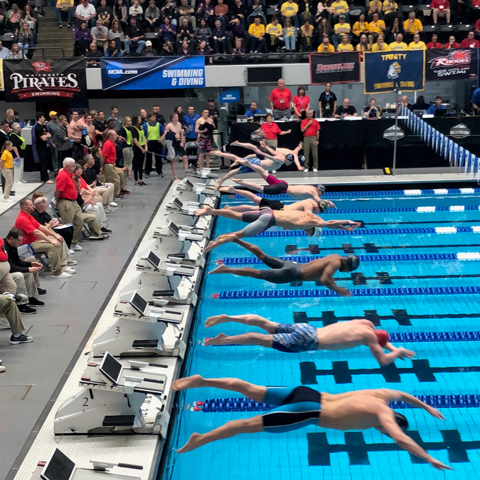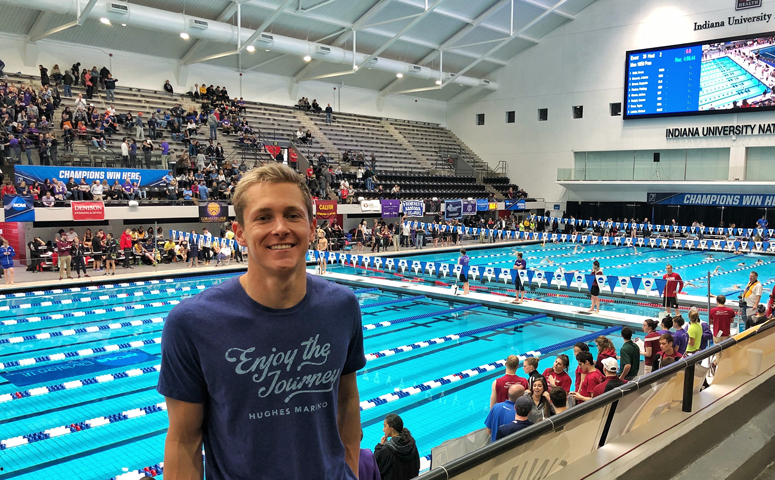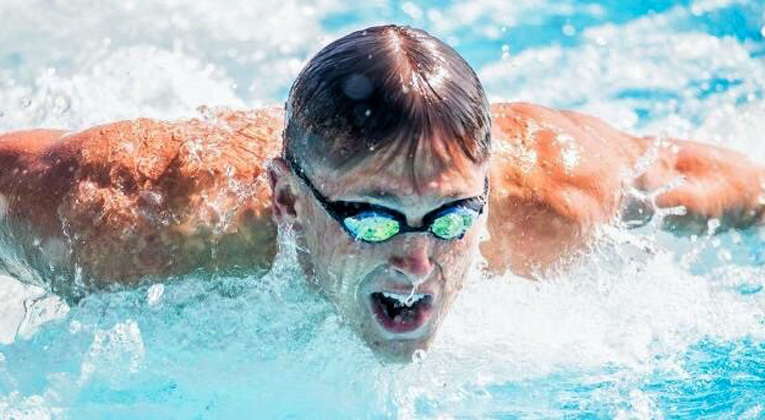When more is less and less is more
By Austin Lashley
Have you ever invested everything into a goal and then come up short? Coming just within reach of the thing you’ve been working towards for weeks, months or maybe even years, only to fall short by the narrowest of margins? For me, that margin was two one hundredths of a second, the equivalent of a fingernail length.
My sophomore year of college I was having the best swim season of my life. My times in the 100-yard butterfly were on par with the top swimmers in our conference and ranking well nationally. As the end of our regular season approached, it became clear that our conference championship would be my last opportunity to qualify for the NCAA National Championship in Texas. Entering the conference championship, I felt mentally and physically prepared to put down the fastest race of my life. I burst off the block and blew away the field in my first 50 yards. My swimming felt effortless and when my fingertips slammed into touch pad sensor at the finish, I frantically threw off my googles trying to make out my time on the scoreboard. Finally, when my vision came into focus, I saw that I had missed the cut, by two one hundredths of a second. I was devastated to have my sophomore season come to an abrupt and unsatisfying end.

I was so frustrated that such an incredibly small margin could keep me from competing at the highest level in college swimming. I looked at myself in the mirror and decided that for my junior year, I was going “all in.” I began doubling down on every part of my training both in and out of the pool so there would be zero chance that I’d miss the cut next year—100% success or 100% failure. I changed my diet, my stroke technique, my practice routine and my race strategy—a complete overhaul. I meticulously studied the video of my sophomore years’ conference race, endlessly trying to identify some indiscernible fix that would shave off the 0.02 seconds that I needed qualify for the national championship. I can honestly say that I have never worked so hard. And so, after 12 months of going “all in,” our conference championship approached. Once again, I launched into the water for the 100-yard butterfly and I let it all come out. Once again, I touched the wall, and once again tore off my cap and goggles, looked up at the scoreboard that would dictate my future, and waited for my eyes to adjust as the numbers came into focus. There it was. 48.87 seconds. I had missed the national cut again by exactly 0.02 seconds.
Missing again by exactly the same narrow margin was one heck of a gut-punch. I had no choice but to take a hard look at the way I had spent the last twelve months and the changes I had made to my training. Twelve months of investing everything I had into my swimming, and it hadn’t improved my times one bit. How was it that all of my hard work wasn’t translating into faster times? Did I perhaps need to be more tactical and focused in my training? If working harder hadn’t improved my times, then would, perhaps, working smarter get it done?
My senior year would be my fourth and final opportunity to make it to Nationals, so I sat down with my coach and we talked about a plan. I began to ask myself what mattered most during each specific week, each particular practice and each particular set. When working towards any type of goal, it’s one thing to be motivated and driven, but without a specific plan of action, focus and clarity on the “how,” one can easily fall off course without even knowing it. Here was my new idea—perhaps the undisciplined pursuit of more can lead to much less. Sometimes, maybe, less is more. I started to analyze the micro-elements of my swimming stroke and my race plan. Rather than throwing everything I had into unbridled effort and exhaustion, I focused on channeling my effort into those areas where a marginal gain could deliver an outsized improvement on my times. Throughout my senior year I became hyper-focused on having the best underwaters, turns and breakouts in the country, as those were the critical aspects of my race that I believed were the keys to a faster swim.
For those who haven’t been swimming butterfly competitively since the age of 5, I will explain these terms:
– Underwaters – The 100-yard butterfly is performed about 65% underwater because of the starts and turns. Off the dive and each turn the swimmer can stay underwater for up to 15 meters. Underwaters are actually where the swimmer is moving the fastest during the race and can lead to a huge advantage if you’re able to build speed rather than lose it.
– Turns – In a 100-yard butterfly there are three wall turns. Turns either make or break a race over such a short distance. One bad turn can easily add .3 seconds to race which can be the difference between 1st and 8th in a 100 yard race. The best swimmers are able to carry momentum through their walls.
– Breakouts – A breakout occurs after kicking out underwater from a turn or dive. How you surface and start your swim stroke can greatly impact the amount of energy needed to maintain your speed going forward. After kicking out over 12 meters with your muscles burning from a lack of oxygen, it’s easy to rush to the surface and poorly execute a breakout.

The end result? A huge success. By focusing on what mattered most in my training during my senior year and executing with discipline on the important details of my race training plan, I qualified for the NCAA National Championship at our conference championship. I entered nationals as the 16 seed, and come race day, after fighting so hard for those two one-hundredths of a second, I was able to simply let go and fly. In the NCAA championship final and the last race of my swimming career, I dropped an entire second from my previous personal best, placing 3rd overall in the 100-yard butterfly.
The takeaway? Going over the top and doing more doesn’t necessarily translate into tangible results or improvement. And this is true in athletics, in business or in our personal lives. Keeping a clear mind focused on what matters most, then mapping out a plan with discipline and sticking to the plan—this, for me, is the key to driving the greatest results and growth.
It takes time to figure these things out. For me, it took exactly four years and two one hundredths of a second.

Austin Lashley is a managing director at Hughes Marino, a global corporate real estate advisory firm that specializes in representing tenants and buyers. Contact Austin at 1-844-662-6635 or austin@hughesmarino.com to learn more.









